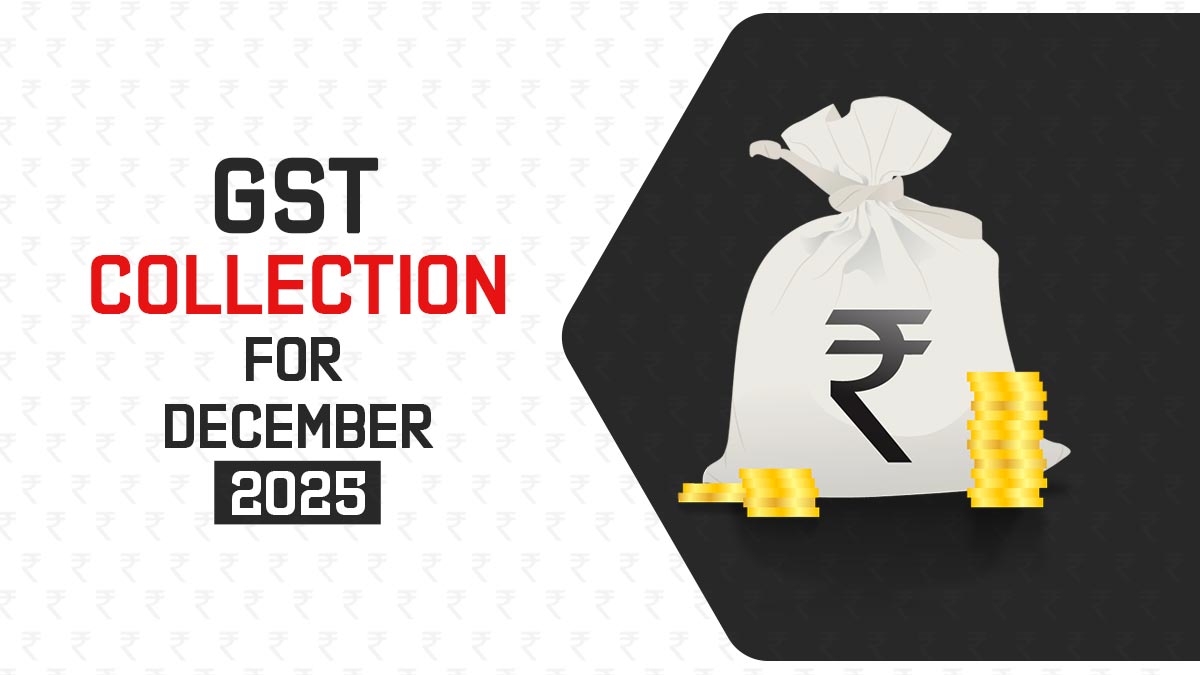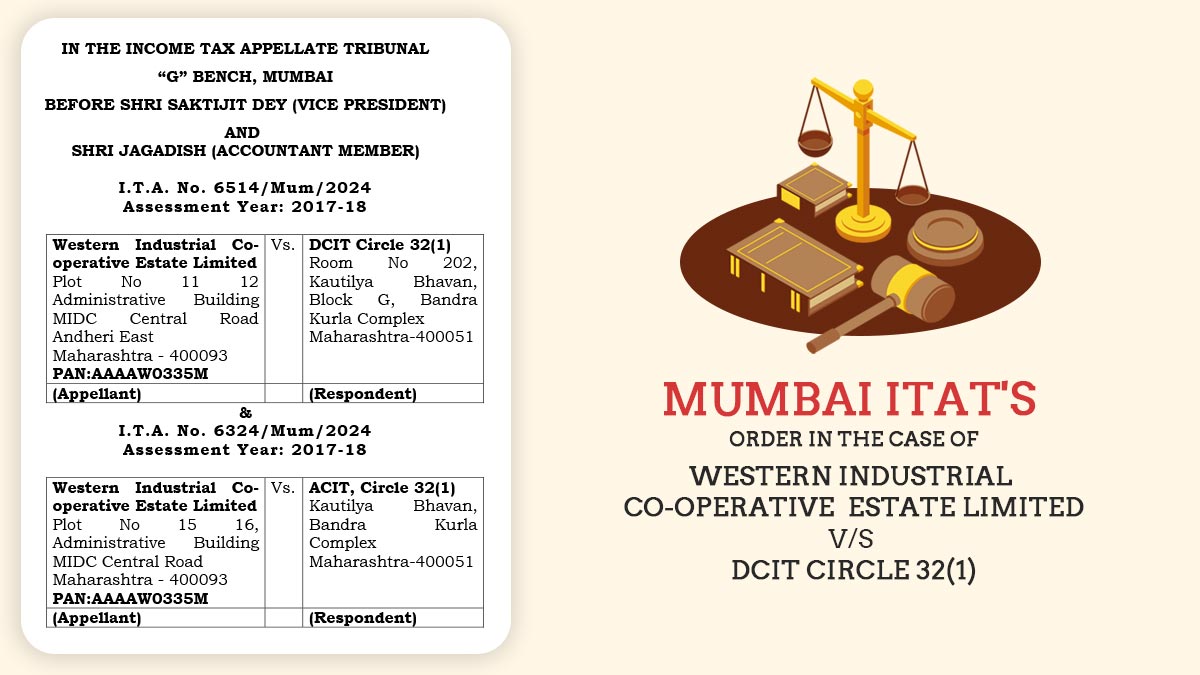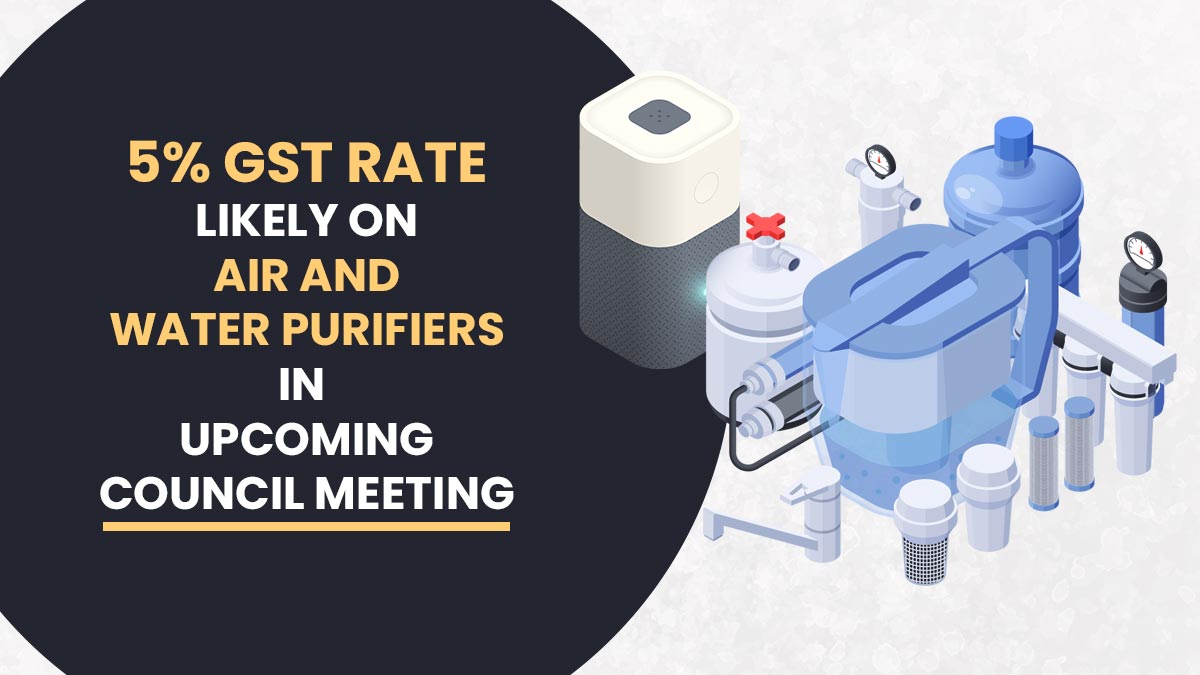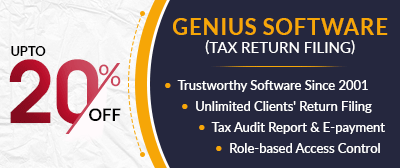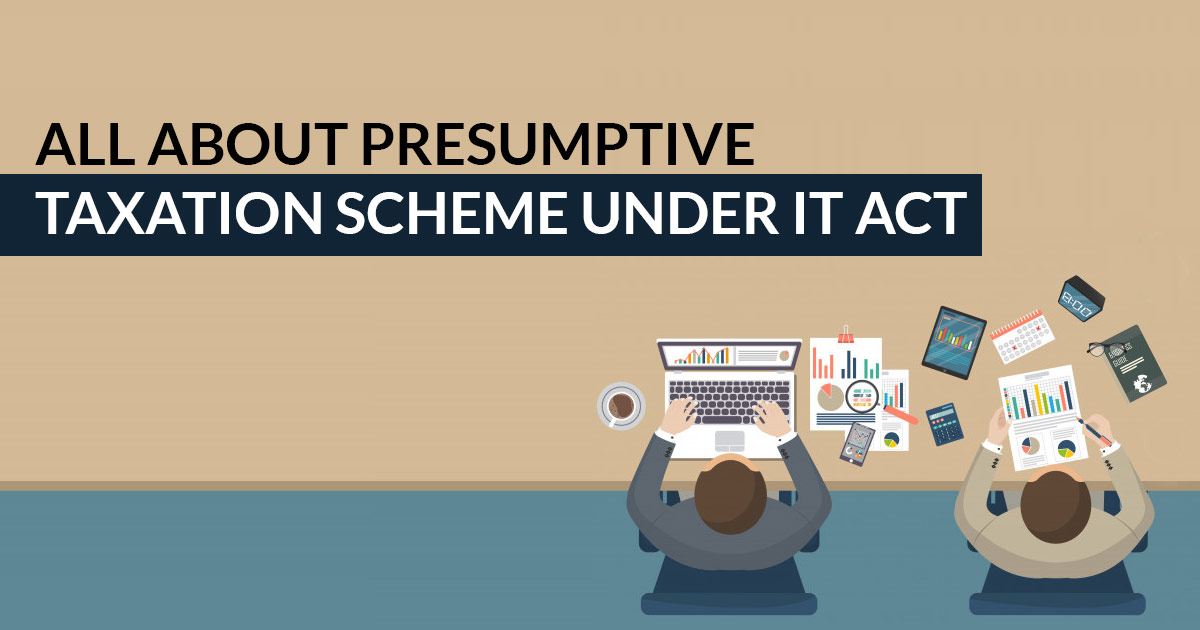
Looking to grow the routes for the market but plunge by maintaining the balance sheet? Or a freelancer who has no time to maintain the balance sheet? If the answer is yes, then the burden for conserving the tax can be released, and one does not have to worry during the tax filing season.
What Is A Presumptive Taxation Scheme (PTS) Scheme?
The Presumptive Taxation Scheme, according to Section 44AA of the Income-tax Act 1961, was launched to relieve small businessmen and professionals from managing their books of accounts. At a prescribed rate, they enable to declaration of the total taxable earnings. It is stated under three sections mentioned below:
Section 44AD
Under this section, the presumptive scheme is basically available for small businesses or firms that fulfil the criteria mentioned below:
- Any individual who is a resident of India
- Hindu Undivided Families (HUFs) who are residents of India
- A partnership firm that is resident in India
- Any individual who has not claimed deductions under section 10A, 10AA, 10B, 10BA or deductions under any provisions of Chapter VIA (sections 80HH to 80RRB) in the relevant year
Once the person is approved for eligibility, the business should also be able to comply with the conditions specified below by the Income Tax Act.
- Your turnover must be less than Rs. 2 crores. A turnover limit of 3 crores applies when 95 % of receipts are in online mode.
- Any businesses except the ones referred to under section 44AE.
Section 44ADA
Section 44ADA is made for small professionals in any of the professions listed below:
- Legal
- Medical
- Engineering or architectural
- Accountancy
- Technical consultancy
- Interior decoration
- Any other profession as notified by CBDT
For any professional whose total gross receipts are not more than Rs 50 lakhs in the preceding year, the income will be computed @ 50% of the total gross receipts of the business gross receipt. A turnover limit of 75 lakhs applies when 95% of receipts are in online mode.
Section 44AE
Under this section, all the small taxpayers engaged in the kind of business, such as plying, renting, or leasing goods and carriages, will be able to assist the advantages. These taxpayers can be:
- Any individual
- A HUF (Hindu Undivided Family)
- A Company
- A Firm
From the section, their income will be counted as:
- An individual’s taxable earnings will be calculated on a calculation basis.
- The chargeable income will be determined at an estimation of Rs 7,500 every month or partly on this income, depending on the tenure of the goods vehicle in the ownership of the person within the year.
In addition to the division, when one chooses for the presumptive taxation scheme, one has to:
- File tax below this scheme for at least 5 years continuously.
- If one chooses to opt out and file the taxes under ITR 3 before the conclusion of these 5 years, the individual will be dismissed from filing under a presumptive scheme for the next 5 years.
Let’s have the calculation of a salaried person under section 44ADA:
Example: Saurav is a full-time salaried person & a part-time freelancer, so let’s see how he can file taxes under the PTS scheme.
- Saurav’s Income – Rs. 35,000/Month = Rs. 4,20,000
- House Rent Allowance – Rs. 90,000
- Standard Deduction – 50,000
- Taxable Income – 2,80,000
Income from Other Sources
Gross Income from freelancing projects – Rs. 6,00,000
Computation
According to section 44ADA, Pavan’s total taxable income will be calculated as follows:
- 50% of Gross is Taxable Income – 50% of Rs. 6,00,000 = Rs. 3,00,000
- Total Taxable Income = Rs. 2,80,000 + Rs. 3,00,000 = Rs. 5,80,000
Study of Tax Audit Limits as per Section 44AD
This year, the first season was a hectic filing season since various professionals were seeking to extend the e-filing date; however, the ministry does not show any interest in the same. Now we have entered the second season, i.e. tax audits.
Section 44AD contracts with persons conducting business and opting for presumptive taxation. For the present year audit, we see distinct cases to learn. The two cases are illustrated below.
Method 1: No Tax Audit is Needed
Condition 1: if the turnover is below 1 crore, the taxpayer does not opt for 44AD in any of the former years.
Do not search for the other thing, as there is no requirement to acknowledge the profit percentage. When the turnover specifies 80 lakh and 4 lakhs profit (less than 6%), but till now, no tax will be needed. The same would be the basic scenario. The books must be maintained; however, the audit would not be needed, although the dept could ask to reproduce the books before them.
The deciding factor in the above case is turnover below 1 cr.
Condition 2: Turnover lower than 1 cr, the taxpayer opted for 44AD in the immediate former year, and the profit shown in the current former year exceeds 6 or 8 per cent (as per the case).
The same would be a confusing thing. Do not make it happen to you with the 1 cr limit. In this, the major concern would be: When the client opts for 44AD in the immediate former year, in the former year, it is also for the former year; required to opt for 44AD when he wants to carry on the advantage of 44AD in the forthcoming 5 assessment years.
Let’s say if the turnover is less than 1 cr, and according to 44AD, the client shows a profit exceeding 6% or 8% according to the case, he would not need to audit their books.
Determining the factor in the above case, the profit percentage must exceed 6 or 8 per cent in the case.
Condition 3: Turnover exceeds 1 cr but less than 2 cr, the taxpayer has opted for 44AD in the immediate aforementioned year, and the profit shown in the former year exceeds 6% or 8%.
The same would be the normal case of section 44AD, which is the easier and most chosen advantage by the small assessee. According to the case, if the income is more than 1 cr, then it is rendered that the audit needed to be done under 44AB; however, the taxpayer would opt for 44AD, hence the limit will be 2 cr.
However, the same limit of 2 cr for the case applies with the condition of the profit declaration.
Now, read carefully:
- 1st condition- The turnover is more than 1 cr but lower than 2 cr.
- 2nd condition- The taxpayer shows the profit exceeds 6 or 8 per cent under the case.
When both conditions are fulfilled, then there shall be no need for auditing the tax.
The deciding factor in the above case – Turnover + Percentage of profit must exceed 6% or 8% according to the case.
Condition 4: Turnover exceeds 1 cr but is lower than 10 cr. Cash receipts are less than 5% of the Turnover, and cash payments are less than 5% of the Total Payment.
The same would be the newly inserted provision, which was summed up in the previous year. Before that, the upper limit was 5 cr, which would be amended to 10 cr.
Section 44AB specifies that when the taxpayer secures a total turnover exceeding 1cr but less than 10 cr, and he fulfils the following two conditions, then an audit would not be needed:
- 1st Situation: Cash receipts are less than 5% of the Turnover.
- 2nd Situation: Cash payments are less than 5% of the Total Payment.
Section 44AB has already been mentioned, hence there would be no condition of profit percentage declaration (6% or 8%).
The deciding factor in the above case – Turnover + Cash transactions
Method 2: Tax Audit Needed
Condition 1: Turnover is less than 1cr, the taxpayer would opt for 44AD in the immediate former year, and the profit shown is less than 6% or 8% as per the case.
If the turnover is 90 lacs and the client has taken the benefit of 44AD in the former year. Now, in the former year, the profit shown would be 4.5 lacs (5%) only,
There is no need for the audit under the plain reading of section 4AB as the taxpayer is outside 44AD and the turnover is less than 1 cr; however, the same would not be easier. Section 44AB (e) would arrive at the scene.
According to section 44AB(e), any taxpayer who is operating the business when opted for the 44AD in the former year and shows a profit less than 6% or 8% in the former year, and the profit mentioned is more than the basic exemption limit he would be required to obtain his accounts of this former year audited.
Hence, according to the above provision, the audit would be subject to being applied to the case.
Deciding the factor in the above case, the taxpayer opted out of 44AD, and the percentage profit would be lower than 6 or 8 per cent, according to the case; however, more than the basic exemption limit.
Condition 2: If the turnover is between 1 cr and 2 cr, then the taxpayer claimed the 44AD in the former year; however, the Profit mentioned in the former year is less than 6 or 8 per cent.
Let’s say the taxpayer secures a turnover of 1.5 cr and he has shown a profit of 8 lacs (5.33%).
If the turnover is more than 1 cr, then the audit would be mandated to be performed according to section 44AB and 44AD furnishes a limit of 2 cr, though with the precondition of the min profit mentioned of 6 or 8 per cent, according to the case.
Hence in the above case, the turnover would exceed 1 cr and less than 2 cr and subsequently, the profit is less than 6 or 8 per cent, thus an audit will be needed.
A taxpayer could not claim the advantage of 44AD for the forthcoming 5 assessment years, and he should perform the audit of his accounts, no matter what the turnover or the profit declared (the only exception to audit would be the net profit less than the basic exemption threshold of tax), section 44AD(4).
A deciding factor in the above case is turnover + Profit less than 6% or 8% according to the case.
Condition 3: Turnover exceeds 1 cr but less than 10 cr, cash receipts would exceed 5% of the Turnover, and cash payments would exceed 5% of the total Payment.
As quoted earlier, section 44AB specified that when the taxpayer secures a total turnover exceeding 1 cr but lower than 10 cr and he would not fulfil the two conditions, an audit is obligated to be done:
- 1st Condition: Cash receipts are less than 5% of the Turnover.
- 2nd Condition: cash payments are less than 5% of the Total Payment.
As specified, that is part of section 44AB, hence there will be no condition of profit percentage declaration (6% or 8%).
The deciding factor in the above case: Turnover + Cash transactions
Condition 4: Turnover exceeding 10 cr.
A tax Audit is needed, no matter the cash transactions or profit declaration.





